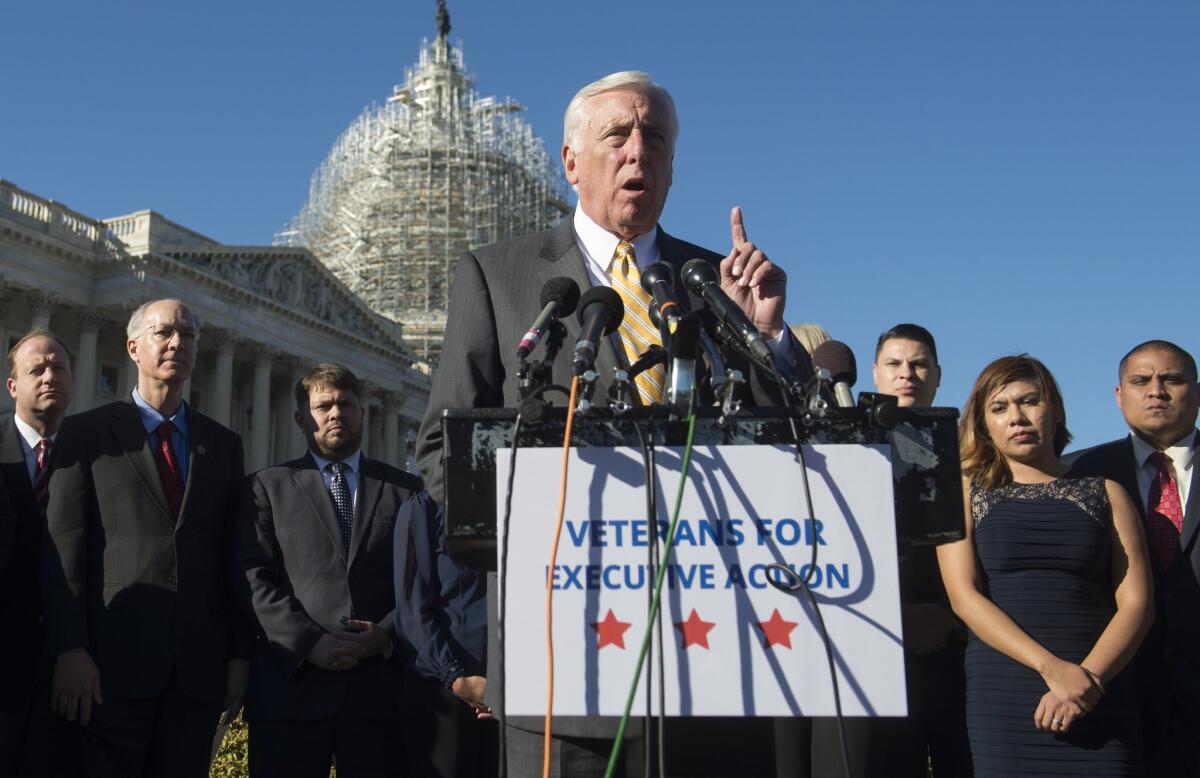Obama’s potential executive order one of many on immigration

Reporting from Washington — Even before President Obama has unveiled his plans for taking executive action on immigration, Republican lawmakers and other critics are accusing him of overstepping his authority.
But Obama would not be the first president to push through immigration reform by working outside of Congress.
Both of the president’s two immediate predecessors used their presidential power to act on immigration. President Clinton ordered eased deportations of refugees from El Salvador and Haiti.
After the 9/11 attacks President George W. Bush issued an executive order allowing members of the military who hold a green card to expedite their citizenship process.
Bush protected foreign students during Hurricane Katrina and medical doctors fleeing Cuba during his term as well.
Obama’s proposal, which could be announced as early as Friday, is expected to provide relief from deportation for as many as 5 million immigrants who entered the U.S. illegally. Though the Senate passed a bipartisan reform bill in 2013, the House refused to act on it.
Earlier presidents also acted unilaterally on immigration. President Carter was prolific in granting refugees temporary relief from deportation, including groups fleeing the Soviet Union, Africa, Central America, and Iran.
President Ronald Reagan signed into law a vast immigration reform bill in 1986 that affected up to 3 million immigrants in the country. Facing criticism that the bill did not include their spouses and families, Reagan ordered a hold on deportations for eligible children.
After Congress failed to permanently legalize such protections, then-President George H.W. Bush acted alone, ordering his administration to protect an estimated 1.5 million eligible families. Congress later made those protections permanent.
Even in eras when illegal immigration was less of a hot-button issue, presidents took action apart from lawmakers.
Facing a shortage of farm workers due to the military draft, President Franklin Roosevelt negotiated directly with his Mexican counterparts in 1942 to establish the Bracero program, which would supply roughly 2 million short-term Mexican farm laborers to American farms and infrastructure projects.
When Congress refused President Truman’s request for a commission to study immigration reform, the president created his own through an executive order in 1952. The President’s Commission on Immigration and Naturalization recommended that the country do away with its restrictive immigration quota system, which placed tight restrictions on the number of immigrants from parts of Europe, Asia and the Middle East. It would take until 1965, under President Lyndon Johnson, for the quotas to be canceled.
President Kennedy authorized a federal program for Cubans fleeing the Castro government in 1961, a year before Congress would pass such legislation. And both Presidents Ford and Carter took similar actions in the wake of the Vietnam War, granting approximately 300,000 Vietnamese and Cambodian refugees temporary shelter in the United States.
Twitter: @mtthnsn
More to Read
Get the L.A. Times Politics newsletter
Deeply reported insights into legislation, politics and policy from Sacramento, Washington and beyond. In your inbox three times per week.
You may occasionally receive promotional content from the Los Angeles Times.










